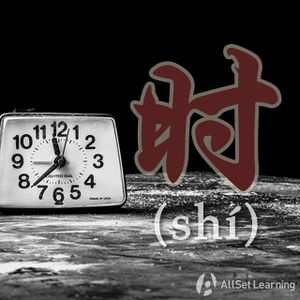Difference between revisions of "Expressing "when" with "de shihou""
| Line 16: | Line 16: | ||
<div class="liju"> | <div class="liju"> | ||
| + | * 你 <em>在 </em> <strong>的时候</strong>,我很开心。 | ||
* 我 <em>在 大学</em> <strong>的时候</strong> 常常 出去 玩。 | * 我 <em>在 大学</em> <strong>的时候</strong> 常常 出去 玩。 | ||
* 我 <em>工作</em> <strong>的时候</strong>,喜欢 安静。 | * 我 <em>工作</em> <strong>的时候</strong>,喜欢 安静。 | ||
| − | * 我 <em>跟 朋友 一起</em> <strong>的时候</strong> | + | * 我 <em>跟 朋友 一起</em> <strong>的时候</strong> ,喜欢 喝 啤酒。 |
* <em>休息</em> <strong>的时候</strong>,我 喜欢 听 音乐。 | * <em>休息</em> <strong>的时候</strong>,我 喜欢 听 音乐。 | ||
* <em>小</em> <strong>的时候</strong>,我 不 喜欢 吃 蔬菜。 | * <em>小</em> <strong>的时候</strong>,我 不 喜欢 吃 蔬菜。 | ||
Revision as of 07:26, 16 August 2012
-
Level
-
Similar to
-
Used for
-
Keywords
Structure
To talk about events that happened at or during a particular time, 的时候 is often used. This is simply attached to the word or phrase indicating the time:
Time + 的时候 + Subject + Verb + Object
As time words can appear before or after the subject, you can also place the Time + 的时候 after the subject.
Examples
- 你 在 的时候,我很开心。
- 我 在 大学 的时候 常常 出去 玩。
- 我 工作 的时候,喜欢 安静。
- 我 跟 朋友 一起 的时候 ,喜欢 喝 啤酒。
- 休息 的时候,我 喜欢 听 音乐。
- 小 的时候,我 不 喜欢 吃 蔬菜。
See also
Sources and further reading
Books
- Basic Patterns of Chinese Grammar (pp. 24-5) →buy



